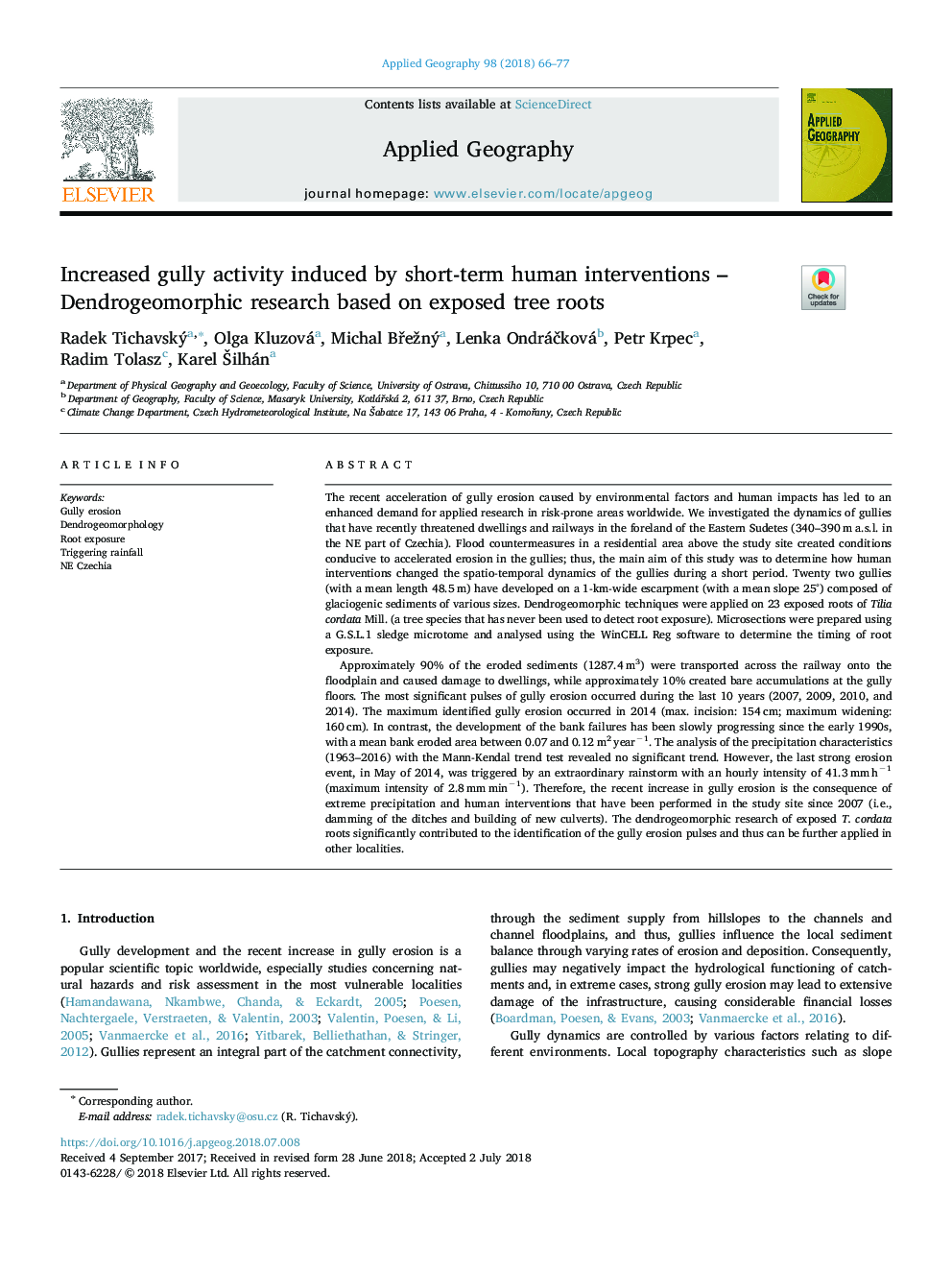| Article ID | Journal | Published Year | Pages | File Type |
|---|---|---|---|---|
| 6538205 | Applied Geography | 2018 | 12 Pages |
Abstract
Approximately 90% of the eroded sediments (1287.4â¯m3) were transported across the railway onto the floodplain and caused damage to dwellings, while approximately 10% created bare accumulations at the gully floors. The most significant pulses of gully erosion occurred during the last 10 years (2007, 2009, 2010, and 2014). The maximum identified gully erosion occurred in 2014 (max. incision: 154â¯cm; maximum widening: 160â¯cm). In contrast, the development of the bank failures has been slowly progressing since the early 1990s, with a mean bank eroded area between 0.07 and 0.12â¯m2â¯yearâ1. The analysis of the precipitation characteristics (1963-2016) with the Mann-Kendal trend test revealed no significant trend. However, the last strong erosion event, in May of 2014, was triggered by an extraordinary rainstorm with an hourly intensity of 41.3â¯mmâ¯hâ1 (maximum intensity of 2.8â¯mmâ¯minâ1). Therefore, the recent increase in gully erosion is the consequence of extreme precipitation and human interventions that have been performed in the study site since 2007 (i.e., damming of the ditches and building of new culverts). The dendrogeomorphic research of exposed T. cordata roots significantly contributed to the identification of the gully erosion pulses and thus can be further applied in other localities.
Related Topics
Life Sciences
Agricultural and Biological Sciences
Forestry
Authors
Radek Tichavský, Olga Kluzová, Michal BÅežný, Lenka OndráÄková, Petr Krpec, Radim Tolasz, Karel Å ilhán,
